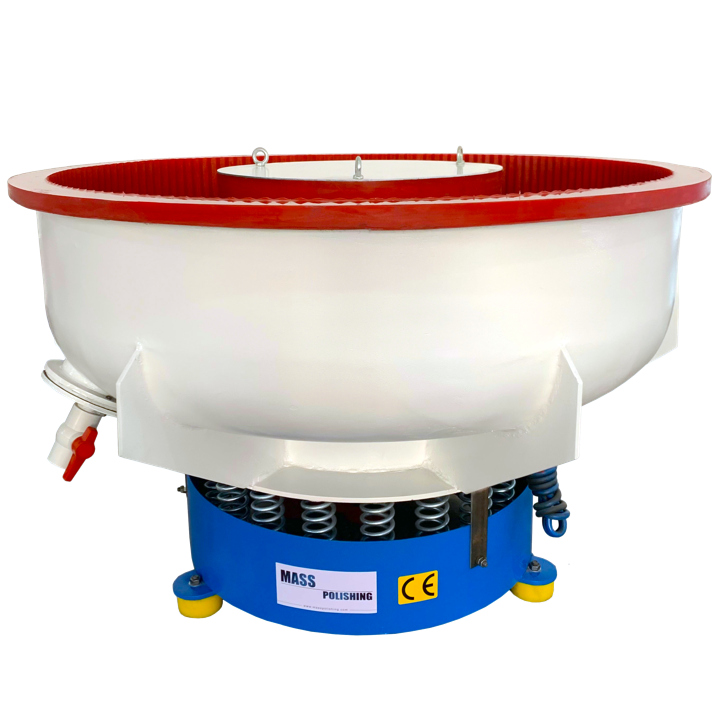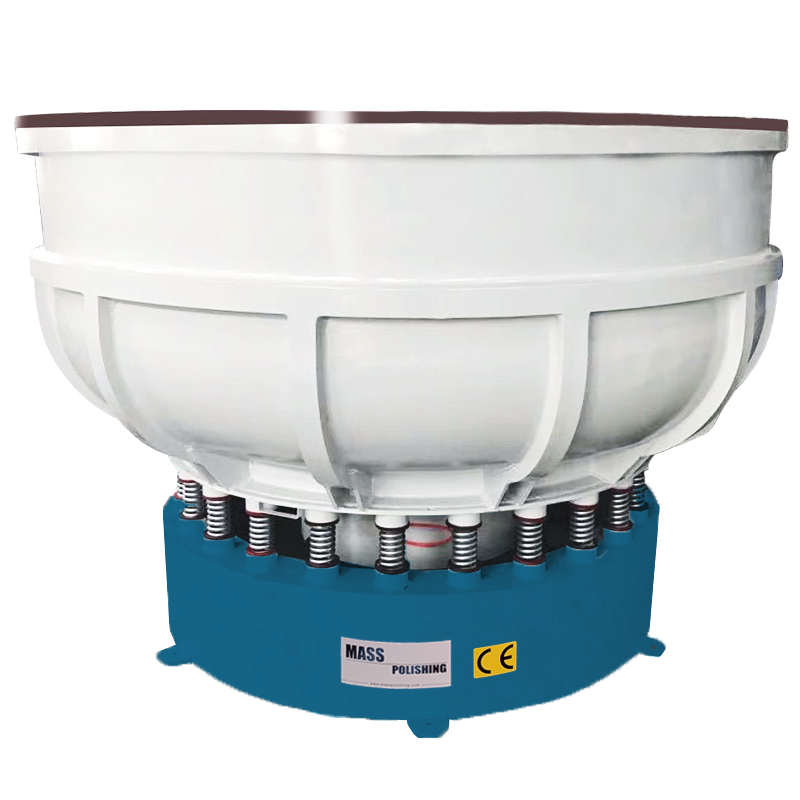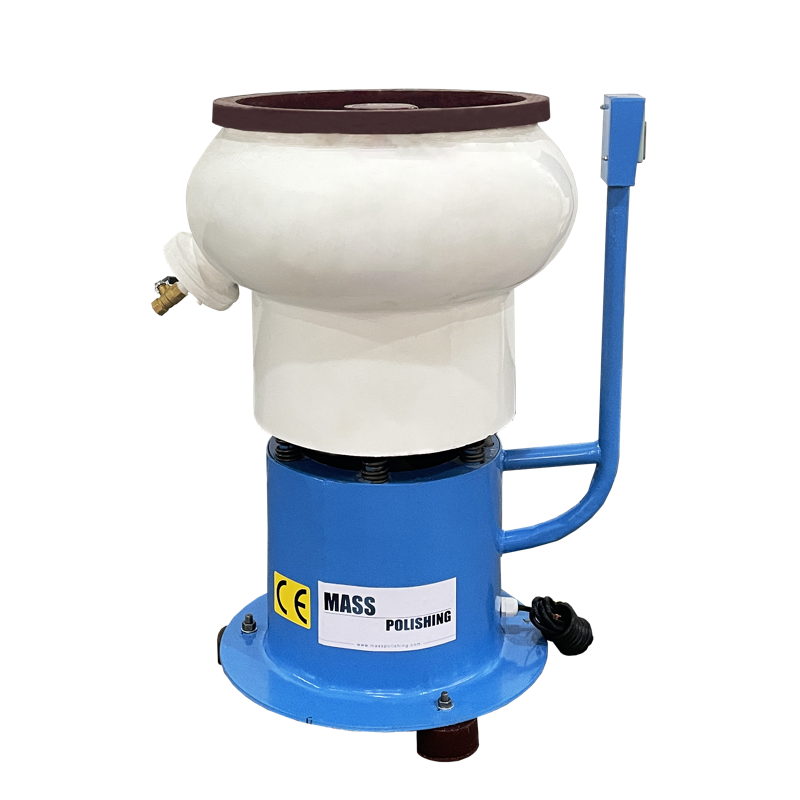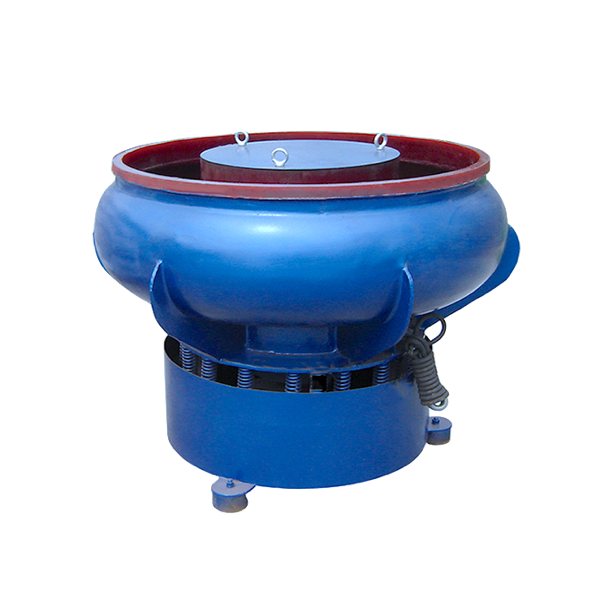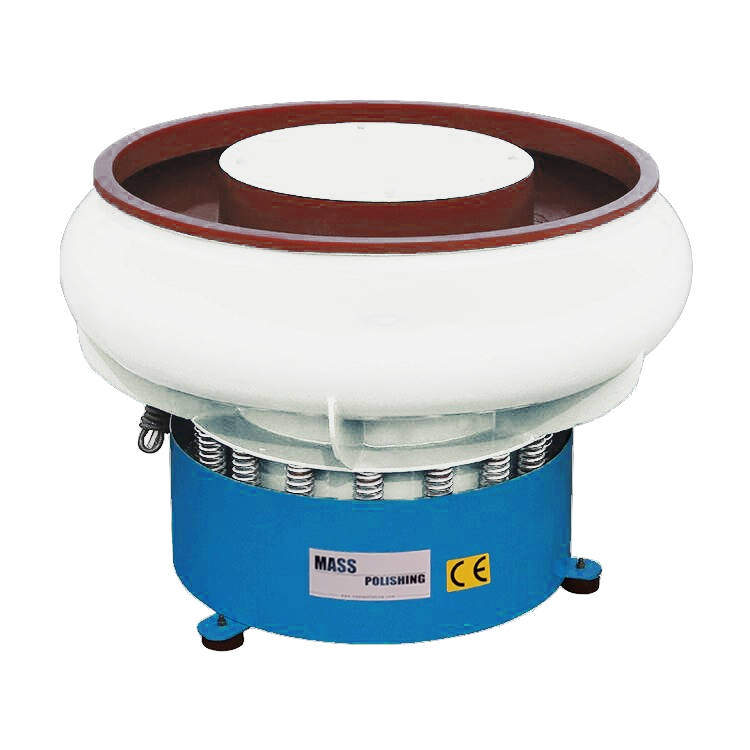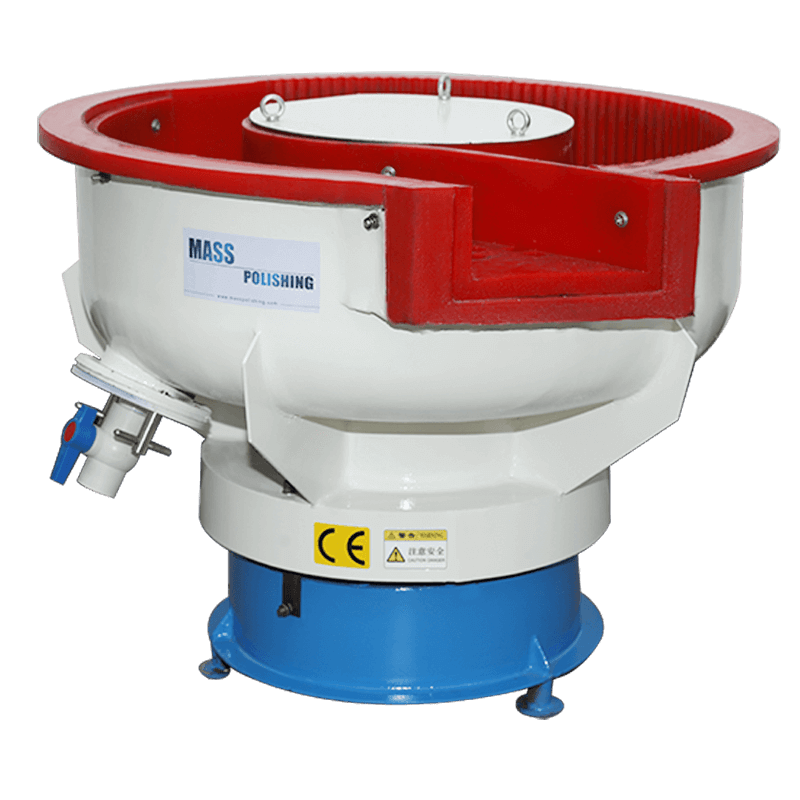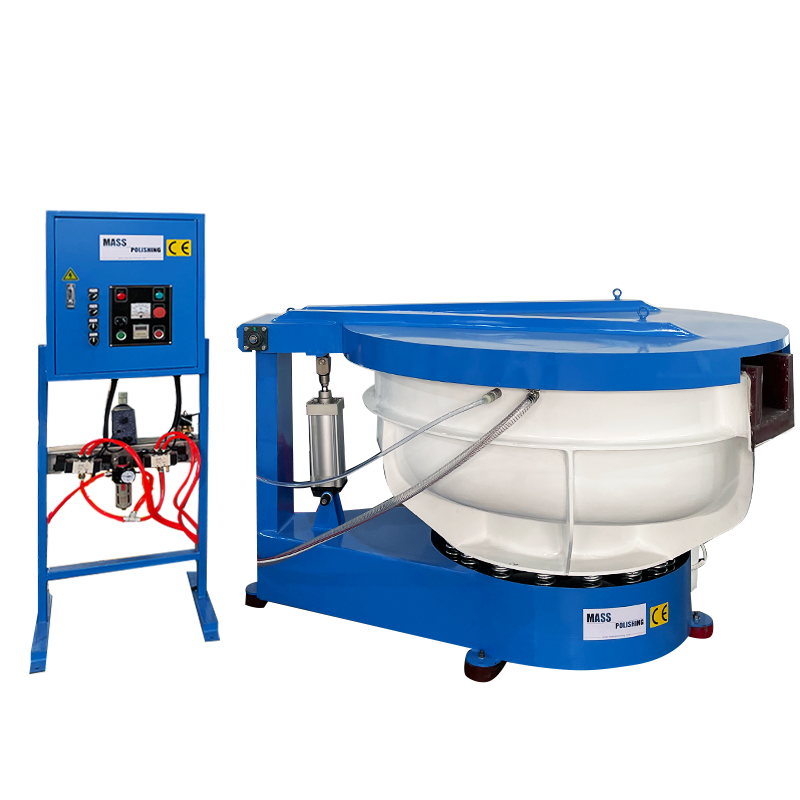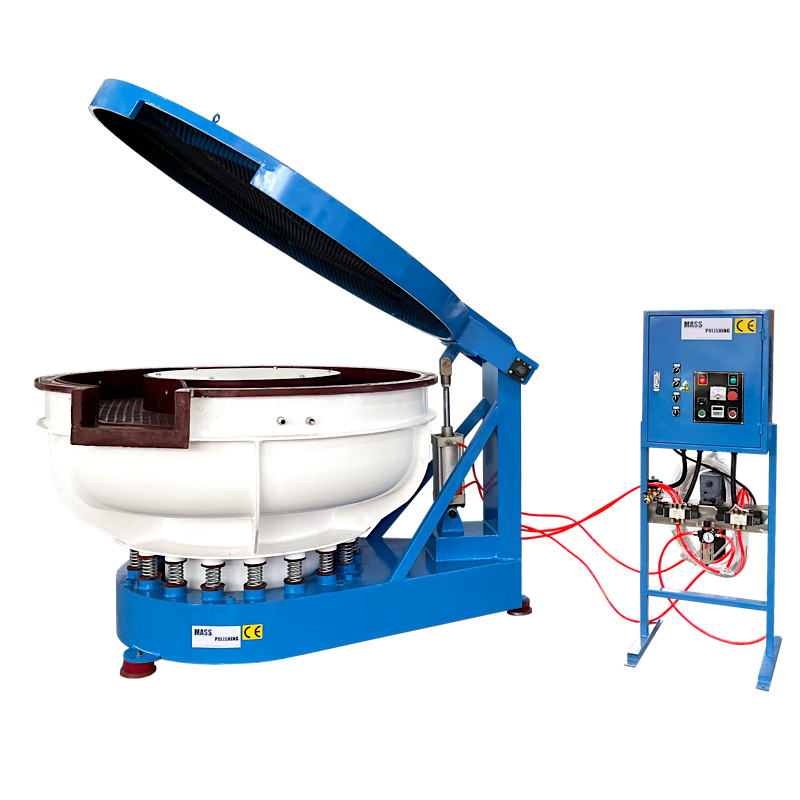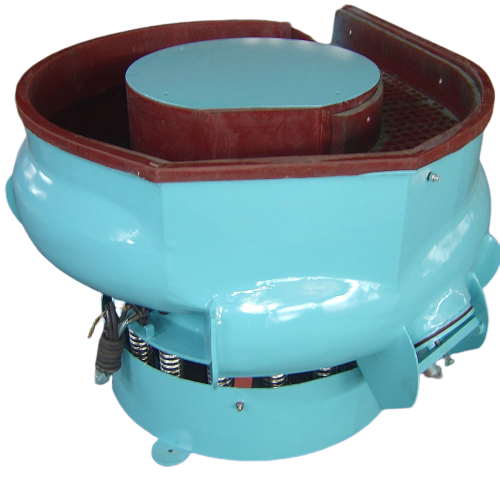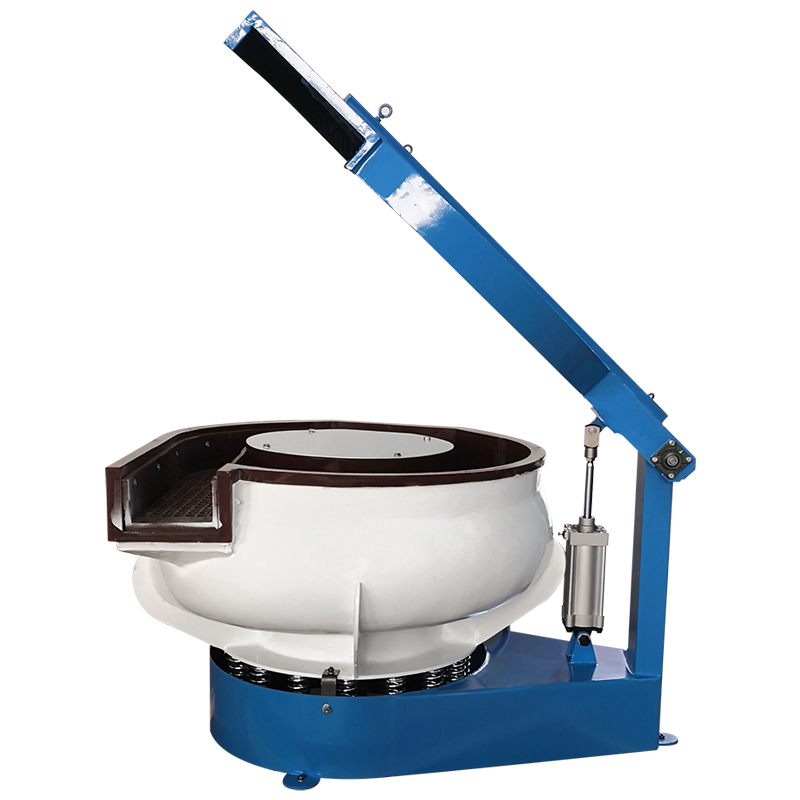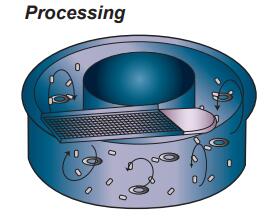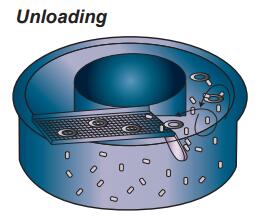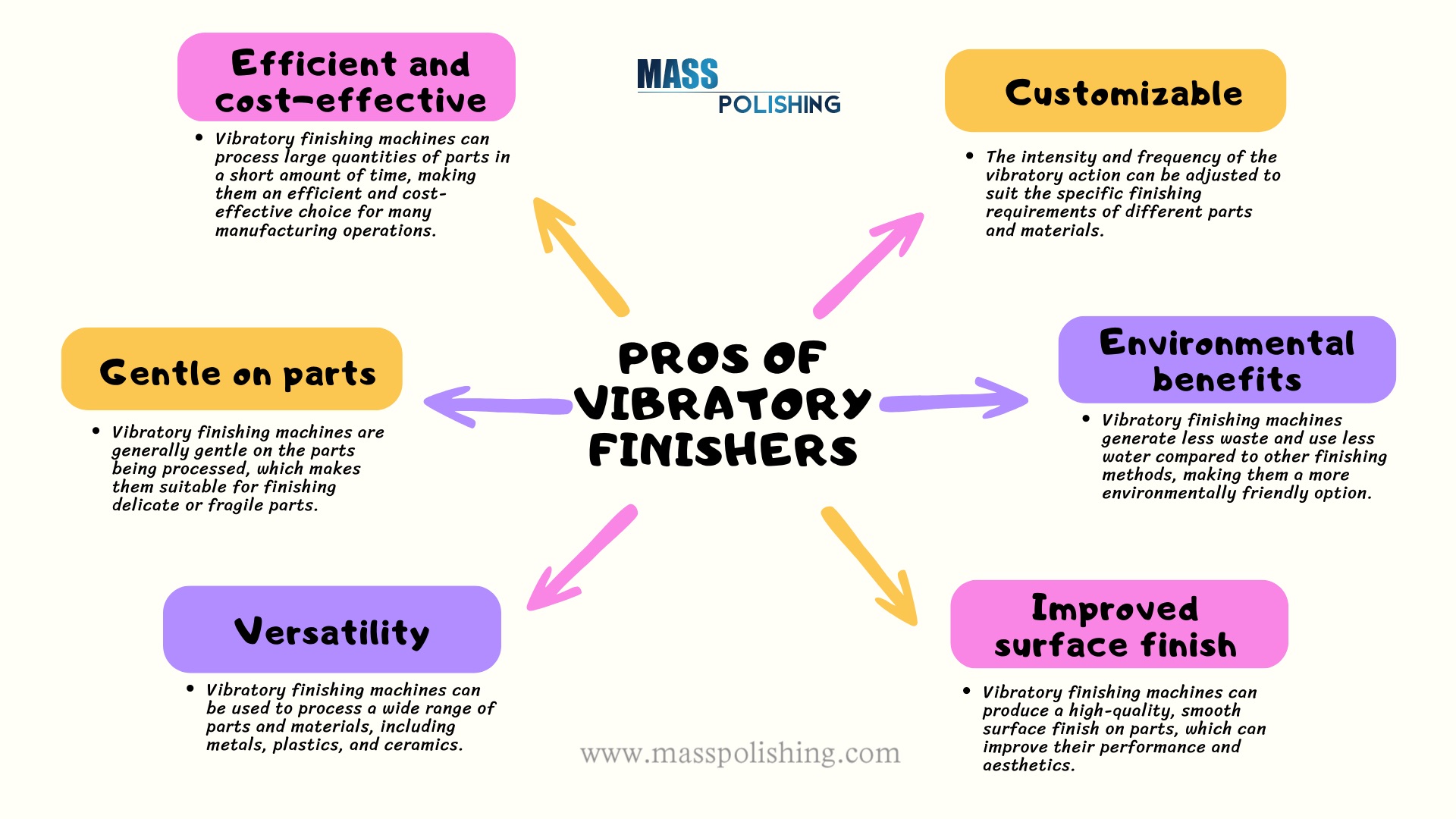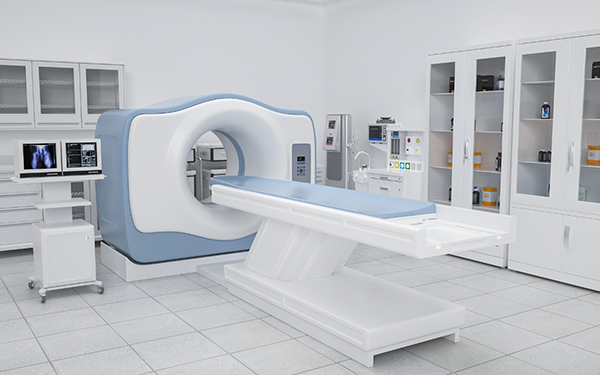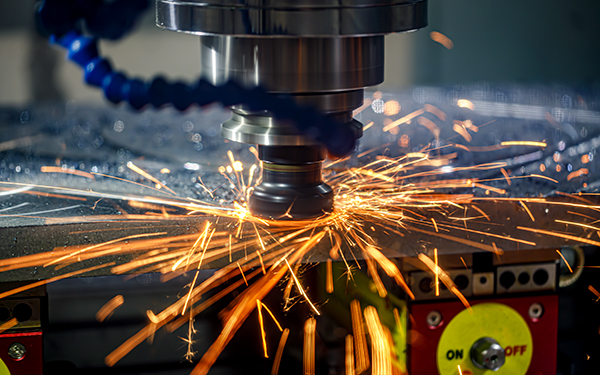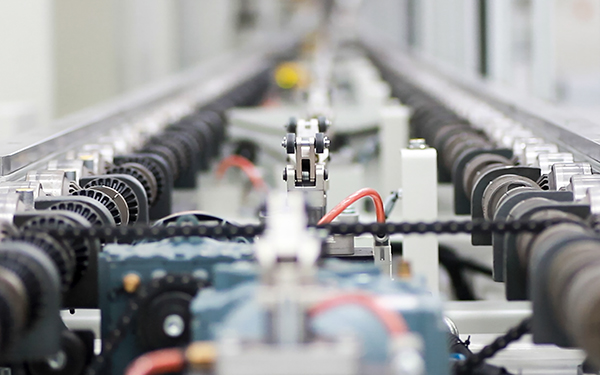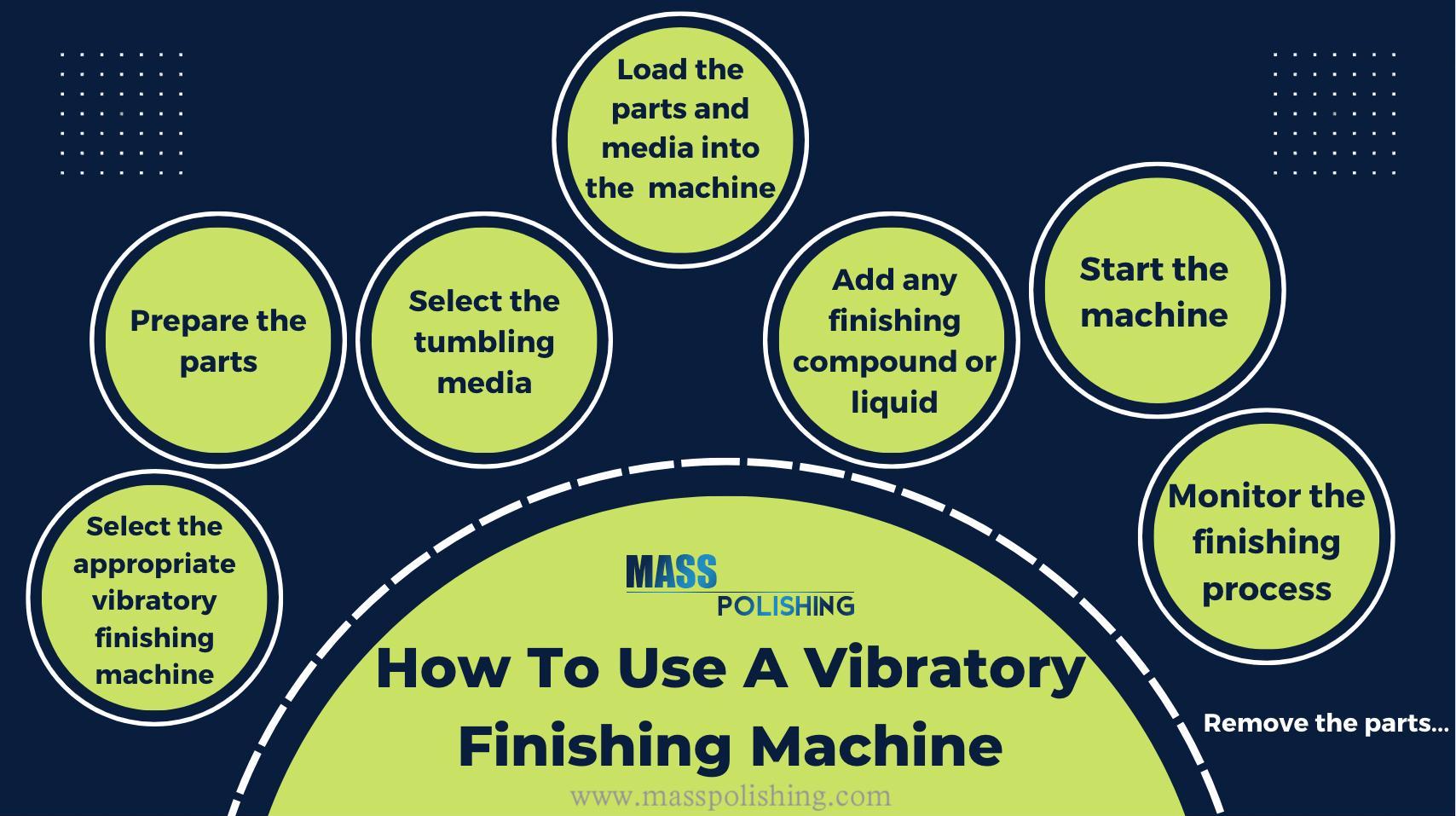A vibratory finishing machine is a machine that is used to smooth and polish surfaces of various parts or components. It typically consists of a large, bowl-shaped chamber that is filled with an tumbling media, such as ceramic or steel beads, and the parts to be finished. The chamber is mounted on a base that vibrates, causing the media and parts to move and rub against each other. The vibratory action, combined with the , helps to smooth and polish the surface of the parts.
Vibratory finishing machines are commonly used in a variety of industries, including automotive, aerospace, and medical device manufacturing, as well as in metalworking and plastic injection molding. They can be used to deburr, deflash, and polish a wide range of parts, including castings, forgings, and machined components. Vibratory finishing machines can also be used to remove rust, scale, and other surface contaminants, and to improve the surface finish of parts.




